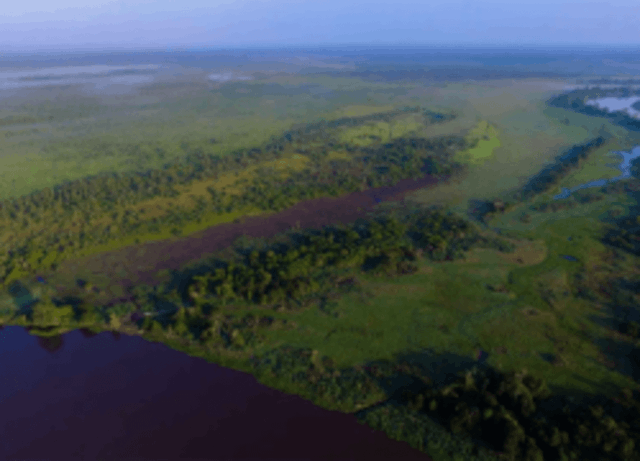Go the extra mile
Towards a cooler planet
Deforestation’s impact on the climate, wildlife and ecosystems
Clearing forests for uses like agriculture, urbanization, and resource extraction is known as deforestation, and it has far-reaching consequences for the environment and its inhabitants. Both the direct effect of deforestation (which upsets the ecological balance) and the indirect impact (which adds to global warming) are real and significant.
Deforestation’s loss of carbon sequestration is a major contributor to climate change. Carbon dioxide is a greenhouse gas, and trees function as a sink for it by absorbing it from the air and storing it in their biomass. Trees absorb carbon dioxide from the air and release it when they are chopped down, hence forest destruction has a warming effect. Additionally, evapotranspiration, the process by which water is recycled to the atmosphere by evaporation from leaves and transpiration from plant roots, is diminished when forests are cleared. The resulting decrease in cloud cover and precipitation exacerbates the already dire consequences of climate change.
Wildlife and ecosystems are also severely impacted by deforestation. Deforestation threatens the survival of innumerable plant and animal species because forests provide essential habitat for them. The result might be a decrease in population size or possibly the extinction of a species. Deforestation also leads to forest fragmentation, which may increase the vulnerability of animal populations already threatened by hunting and other human activities.
Water and food supplies are only two examples of the kinds of things that might shift when forests are cut down. This may have far-reaching consequences for the ecosystem as a whole, leading to the extinction of species that rely on the ones that are harmed.
Efforts are being made to lessen the negative effects of deforestation and conserve forests. Protected areas, such as national parks and wildlife reserves, are one method for preserving forests and the biodiversity they harbor. Sustainable forest management is another option, with the goal of striking a balance between the forest’s natural demands and those of surrounding human settlements. One example is the technique of selective logging, in which just some of the trees in a certain region are chopped down as opposed to the whole forest being cleared.
The effects of deforestation are being lessened via the use of reforestation as well. This entails reforesting formerly forested regions by planting fresh trees there. As a bonus, this may increase the area’s potential to store carbon and provide new homes for local fauna. The forest ecology may be preserved while simultaneously providing local residents with a reliable supply of food and money via agroforestry, which mixes agriculture with tree planting.
The use of remote sensing technologies and satellite photography to track and identify instances of deforestation in real time is yet another potential effort in this direction. Conservation groups and governments can now pinpoint the exact locations of ongoing deforestation with the help of this cutting-edge technology. Additionally, blockchain technology is being utilized to make the supply chain of wood and other forest products visible, safe, and tamper-proof, which helps in the fight against illicit logging and deforestation.
Governments and international organizations have been making efforts to lessen the causes of deforestation in recent years. Efforts to decrease greenhouse gas emissions from deforestation and forest degradation are included here, as are programs like REDD+ (Reducing Emissions from Deforestation and Forest Degradation), which intends to offer financial incentives for poor nations to do so.
Deforestation has far-reaching effects on weather, fauna, and ecosystems. Major effects include a reduction in carbon sequestration capability, biodiversity loss, disturbance of ecological balance, and shifts in the availability of various resources. But new measures are being launched to conserve forests and offset these consequences. These include protected areas, sustainable forest management, replanting, agroforestry, remote sensing technologies, blockchain technology, and the REDD+ program. These efforts are crucial for limiting climate change, protecting biodiversity, and guaranteeing the health of Earth’s ecosystems for future generations.
However, it must be stressed that deforestation remains a serious issue all over the globe despite these efforts. Deforestation is being caused by things like industrial agriculture, urbanization, and illicit logging, all of which may be mitigated if governments, organizations, and people work together. This may need a change in consumer behavior, with an emphasis placed on sustainably produced goods, as well as a reevaluation of our economic and development patterns.
Involving and supporting local populations who rely on the forest for their livelihoods is also crucial, as is recognizing their rights as forest stewards. To maintain the long-term survival of the forests and provide a living for the local inhabitants, it is necessary to respect the rights of local communities and help them in sustainable management of their forest resources.
Deforestation has far-reaching consequences for the planet’s weather, animal populations, and ecological balance. While deforestation is a serious problem, new measures are being launched to safeguard forests and lessen its effects. The REDD+ program, remote sensing, blockchain technology, agroforestry, reforestation, and protected areas are all examples of such initiatives. Deforestation can be prevented if we work to eliminate the underlying causes, engage and empower local people, and adopt more sustainable economic and development practices. Taking these measures will help ensure the continued provision of ecosystem services by the world’s forests.
Certification methods like the Forest Stewardship Council’s (FSC) and PEFC’s (Programme for the Endorsement of Forest Certification) have also gained traction in recent years (PEFC). These certification systems were created to help customers recognize goods that were made in a responsible manner and to encourage responsible forest management. These initiatives provide incentives for businesses to adopt sustainable practices and minimize deforestation by certifying items as originating from sustainably managed forests.
Indigenous and community-based conservation, in which locals take part in forest management and protection, is another vital strategy. This method acknowledges the value of local people as forest stewards and aims to equip them to better safeguard their own resources. Because local populations care more about the long-term health of their forests and are in a better position to comprehend the complexity of the local ecosystem, this strategy has the potential to be more successful than top-down conservation initiatives.
There has also been a rising trend to factor in the worth of ecosystem services given by forests into monetary policymaking. Efforts to assign a monetary value to the services that trees offer, such as carbon sequestration, water purification, and biodiversity conservation, are included in this category. Recognizing the monetary worth of these services allows for their incorporation into policymaking and the development of monetary incentives for forest preservation.
It is also crucial to deal with the economic and social causes of deforestation, such as poverty, population increase, and a lack of land availability. Reforming land ownership, expanding access to healthcare and education, and fostering environmentally responsible economic growth are all potential means toward this end.
Although deforestation is a difficult problem to solve, numerous programs are already under way to conserve forests and lessen the effects of deforestation. The causes of deforestation can be reduced, existing forests can be conserved, and sustainable forest management can be promoted if governments, organizations, and people work together to achieve these goals. To ensure that future generations may reap the benefits of today’s forests and the ecosystem services they offer, we need to take a global and holistic approach to forest conservation.
17 South Street
Auckland 1010
New Zealand
[email protected]
Sign up. Be inspired. Get clicking.
Subscribe now to stay up to date with CarbonClick, carbon offsetting and climate action.
By signing up you agree to our Privacy Policy.



